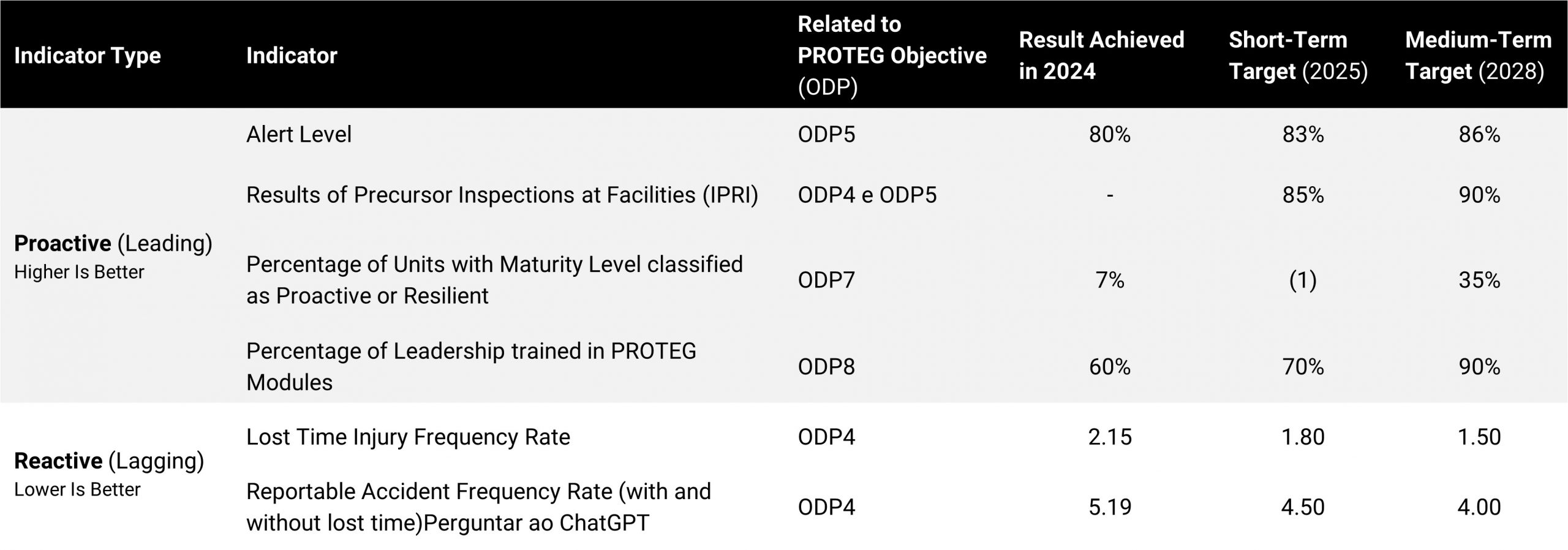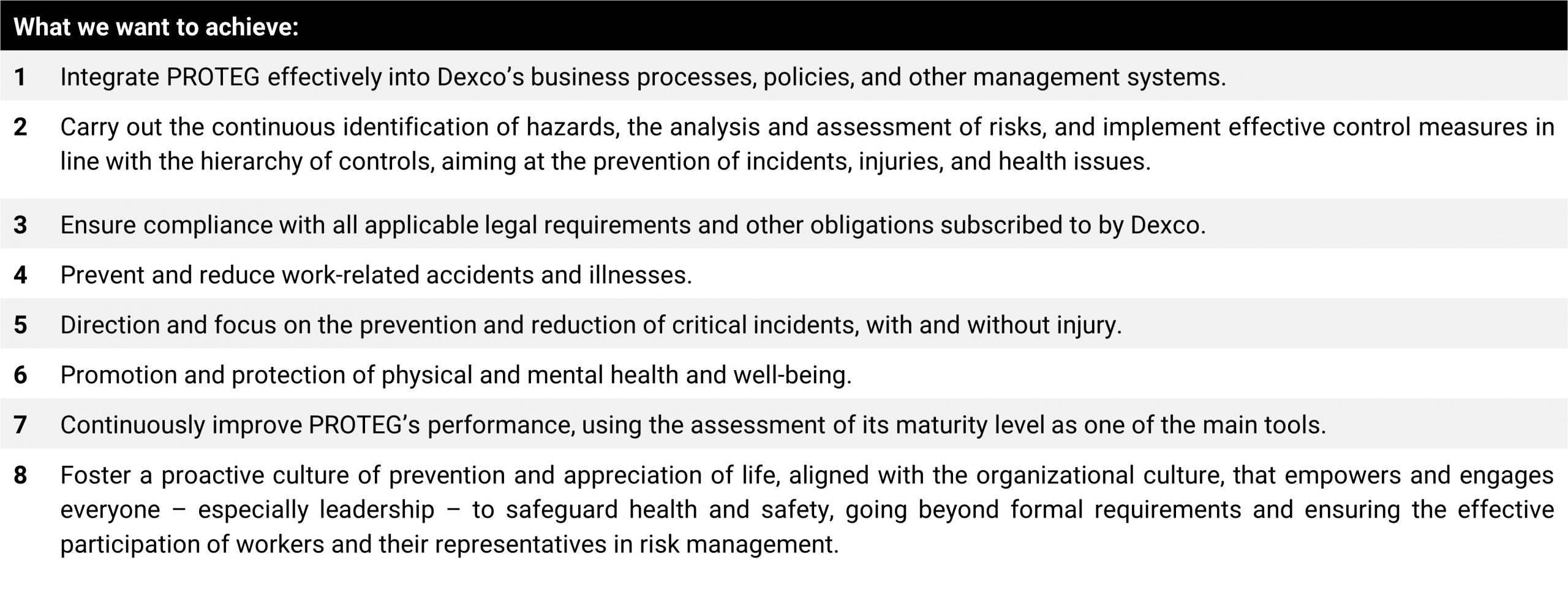Key Monitoring and Performance Evaluation Indicators of PROTEG (targets)
To ensure the achievement of the intended results of PROTEG and to monitor progress toward its Objectives (ODP) — with special attention to those driven by the 2025–2028 Strategic Focus Areas — DEXCO uses a set of Proactive (Leading) and Reactive (Lagging) Key Performance Indicators (KPIs).

Alert Level: Monthly assessment of the units based on the SIF potential (serious injuries and fatalities) of incidents and the results of precursor inspections. Each unit is classified, based on a “decision tree,” with a “traffic light” indicator: green (no incidents or precursors with SIF potential), yellow (precursors with SIF potential identified during inspections), or red (at least one incident with SIF potential). According to the number of months classified under each “traffic light” color (green, yellow, and red), a percentage Alert Level is determined (e.g., all months classified as green traffic light correspond to 100% achievement).
Precursor Inspections at Facilities (IPRI): Periodic inspections conducted by the Occupational Safety Technicians team that adopt concepts from the SIF methodology (serious injuries and fatalities). The premise is that the higher the “number of precursors” identified during an inspection, the greater the risk and uncertainty. The precursors mainly relate to Section 2 of PROTEG, which addresses prevention measures for key SIF incident precursors such as portable ladders and scaffolding, energy source lockout, working at height, motorized equipment, confined spaces, hand and portable electric tools, machine and equipment guards, hot work, electrical installations, lifting operations, among others.
Maturity Level: A process that includes cross-audits among business units, covering the 43 PROTEG topics. Units are classified into five different levels: vulnerable, reactive, calculative, proactive, or resilient (the highest maturity level).
Leadership Training and Development in PROTEG: Aims to develop DEXCO leaders at all levels to fulfill their role in promoting a preventive culture and valuing life, aligned with DEXCO’s organizational culture. Provides “literacy” in key concepts of occupational risk management and process safety.
Reportable Accident Frequency Rates: All Dexco’s safety rates and figures are calculated based on 1,000,000 hours worked (for more information, see the 2024 Integrated Report).





